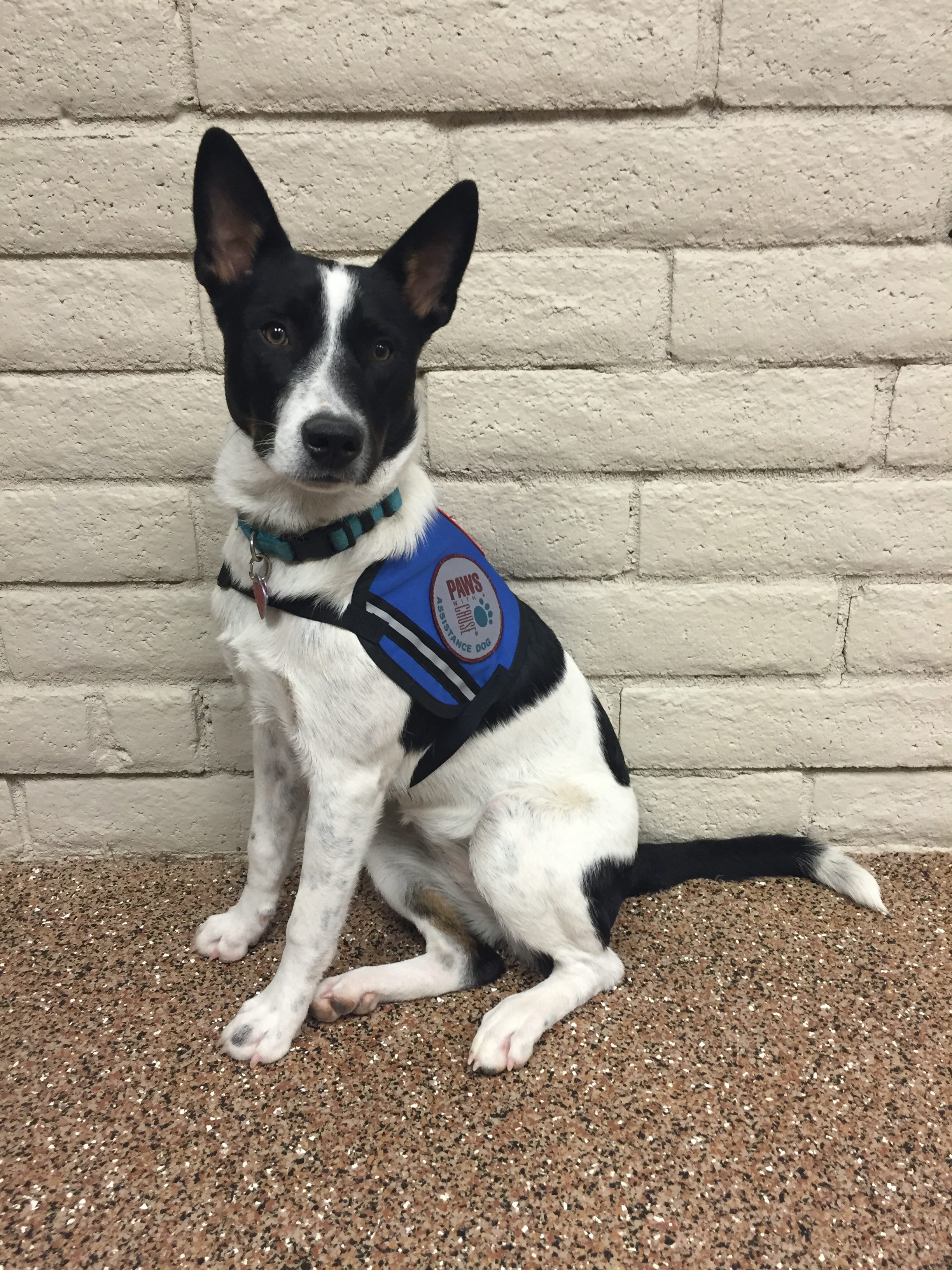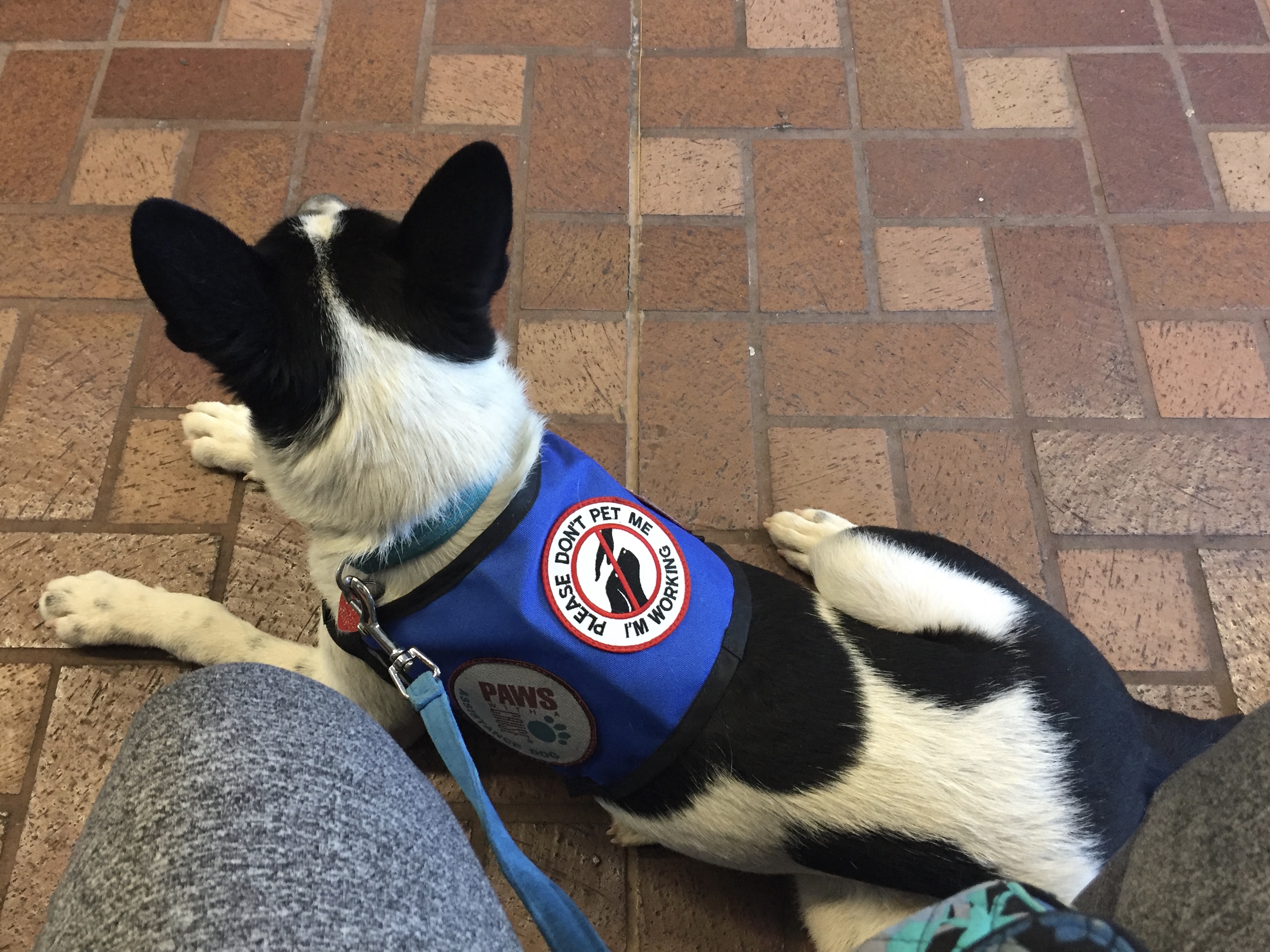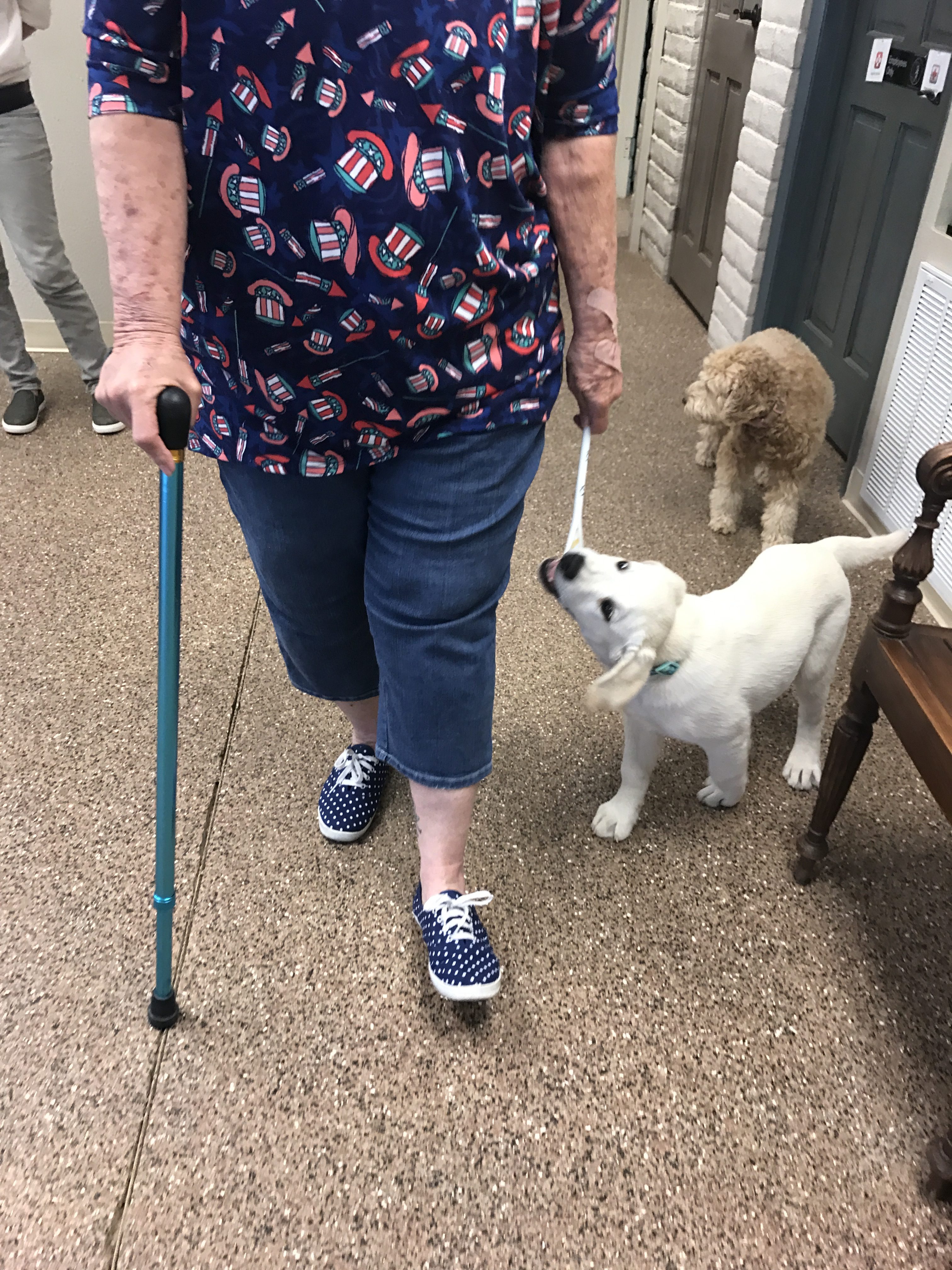Assistance Dogs, Service Dogs, Emotional Support Dogs, and Therapy Dogs
What is the difference between an assistance dog, service dog, emotional support dog, and therapy dog?
We’ll explain it here! They differ in their roles, the amount of training received, and access rights under federal and state laws. Please take the time to read more and become informed.
We can help with training each of these types of dogs. Contact us to learn more.



Assistance Dogs and Service Dogs
An assistance dog is a dog that has been specifically trained to perform tasks to assist a person with a disability, improving their independence and quality of life.
This is the direct definition from the Americans With Disabilities Act Title III, lengthy but to the point:
“Service animal means any dog that is individually trained to do work or perform tasks for the benefit of an individual with a disability, including a physical, sensory, psychiatric, intellectual, or other mental disability… The work or tasks performed by a service animal must be directly related to the individual’s disability. Examples of work or tasks include, but are not limited to, assisting individuals who are blind or have low vision with navigation and other tasks, alerting individuals who are deaf or hard of hearing to the presence of people or sounds, providing non-violent protection or rescue work, pulling a wheelchair, assisting an individual during a seizure, alerting individuals to the presence of allergens, retrieving items such as medicine or the telephone, providing physical support and assistance with balance and stability to individuals with mobility disabilities, and helping persons with psychiatric and neurological disabilities by preventing or interrupting impulsive or destructive behaviors. The crime deterrent effects of an animal’s presence and the provision of emotional support, well-being, comfort, or companionship do not constitute work or tasks.”
The terms “assistance dog” and “service dog” are both commonly used by the public, legislation, and different organizations. We prefer to use the following definitions and types of assistance dogs categorized by Assistance Dogs International.
- Guide dogs: for people who are blind or with visual impairments
- Hearing dogs: for people who are deaf or hard of hearing
- Service dogs: for people with disabilities other than vision or hearing, such as physical disabilities, psychiatric disabilities, autism, seizures, and other medical conditions
Assistance Dog Etiquette
When you see a person with an assistance dog, respect their space and privacy. It is best to ignore them and let them go about their day.
- If you need to say something, speak to the handler/person, not the dog
- Do not be offended if the handler does not want to interact
- Do not attempt to touch or pet the dog without permission
- Do not talk to the dog or make distracting noises
- Do not ask what the assistance dog is for, or other invasive personal medical questions
- Do not let your dog approach an assistance dog
Business owners & employees:
- May only ask the handler 2 questions to determine if a dog is a service animal: Is the animal required because of a disability? What work or tasks has the animal been trained to perform?
- They must allow service animal teams to enter the facility but may request the animal be removed from the premises if the animal is not housebroken, or is not under the handler’s control.
- Assistance dogs are NOT required to be in a vest or show any form of documentation, ID, or certification. Paying for a registry, certification, or ID does not mean a dog is a legitimate assistance dog.
Could you benefit from an assistance dog? Do you have a dog you want to train to be your service dog? We can consult with you and do basic obedience training, some types of task training, or refer you to reputable assistance dog trainers and organizations.
Emotional Support Animals
Emotional support animals (ESAs) may be an animal of any species that provides companionship and comfort to individuals with psychological disorders.
The use must be supported by a qualified physician, psychiatrist, or other mental health professional based upon a disability-related need.
They do not have to be trained to perform any particular task.
They are NOT considered service animals under the ADA and do not have public access into places such as stores and restaurants. However, ESAs can live in no-pet housing (Fair Housing Act) with documentation. Starting January 2021, airlines now consider ESAs as pets rather than assistance animals and specific airline policies are changing. Workplaces and schools/universities set their own policies on whether they allow ESAs.
We can help train emotional support dogs for basic obedience and good manners in places they are allowed.


Therapy Dogs
A therapy dog can be a part of a volunteer visiting team, a facility dog, or a dog that works professionally in a healthcare or educational setting. They range in training completed and activities performed. Read more about how these roles differ during animal assisted interventions.
Therapy dogs do not have public access except to the facilities they work in or are granted permission to visit.
Dottie and Tater Tot primarily fall under this category. We like to describe their role as canine co-therapists as they help facilitate and direct our OT interventions!
We train people who want to volunteer or work with their dogs in healthcare, therapy, and education settings. Contact us to learn more about dog training and continuing education in animal assisted interventions!
More Information on Service Animals and Emotional Support Animals
- FAQs About Service Animals and the ADA
- Service Animals and Emotional Support Animals
- FAQs on Service Animals and Emotional Support Animals in Housing
- US Department of Transportation Information on Service Animals
- ADI Accredited Assistance Dog Training Organizations
- SunDog Therapy’s Resource Page for Animal Assisted Interventions
